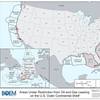Insights: Maritime and an Honest Discussion About AI
The maritime industry is often criticized as being slow to adopt new technologies. While ship building is an age-old industry, it is also varied: fishing, commercial, inland, marine construction, energy, passenger, recreation, defense, and the list goes on. Each sector serves a different purpose, and bespoke vessels fulfill different missions, operate in different environments, and are subject to different regulatory profiles. As a result, our industry abounds with unique solutions, but often it is not the kind of innovation that fits in your pocket.
Perhaps the criticism comes from the fact that ship building, and the industry it serves, is a highly competitive and dynamic market, and this may reward strategic and measured investment. Our industry is not averse to technology, but perhaps we are pragmatic in our choices. Unlike some consumer products, if the industrial adoption of technology is not for the sake of novelty, a strong value proposition is a prerequisite for wide acceptance.
This sort of pragmatism seems to fly in the face of the social-media-fueled juggernaut that is Artificial Intelligence (AI). Have you heard? The promises are grand and the premonitions ominous. Sadly, dialogue of this type misses the mark when it comes to exploring the possible value of AI from an industrial perspective. Yet this does not diminish the importance of the question: what value does AI offer the maritime industry?
To answer this question, it helps to know a little about the digital machinery that makes AI possible. Let’s look at what goes on under the hood: machine learning (ML). Machine learning models are configurable computer algorithms which can learn complex relationships within data. The models have tens, hundreds, thousands, or even millions of tunable parameters, and they learn by optimizing the parameters to conform to a data set in a high-dimensional, nonlinear, and sometimes eerily intelligent way. There are many different types of models, but the details and differences between each are not important in this discussion. The most important concept to remember is that ML models are trained to map inputs to outputs—even if the relationship between them is not obvious.
The adaptable and configurable nature of ML models is largely what contributes to their appeal: a model can be trained to fit virtually any type of data. Sometimes this property is referred to as universal approximation, but this doesn’t mean the model can predict every possible outcome. In fact, a well-trained model can only make reliable predictions within the confines of its training dataset. In colloquial terms, the resulting AI thinks inside the box. If only one fact should be understood by prospective industrial users of AI, it is that AI—in its current form—cannot synthesize information that is beyond its original training dataset. There are some who will surely challenge this statement, but for the time being, true synthesis remains a distinctly human ability.
When it comes to deploying AI, data is paramount. Because the capability of AI is limited by the data to which it has access, this means two things:
- To derive value from AI, you need a robust data set, and
- If the relationships within the data are complex, you will likely need a lot of data.
These two facts make applications where data is plentiful, and patterns identifiable, yet conventional modeling is difficult, easy candidates to derive value from AI. Most of the applications of AI which we see in our news and social feeds tackle problems in this category.
In the maritime industry, there are similar data-rich use cases which can benefit from AI. This includes equipment monitoring, health, and failure detection, operational and voyage planning, fuel, and energy monitoring—areas already seeing successful commercial deployment of the technology. Shipyard operations also create a lot of data related to workflow, material moving, and inventory, and if the data were accessible, AI could help identify and leverage unseen patterns and relationships. AI is extremely valuable when it can expose relationships within available data that we didn’t know existed, or were unable to model in other ways, and many of the current industrial applications of AI leverage this fact as part of their value proposition.
However, there are many problems in the maritime industry which are not data rich. This is often due to the nature of the problem, for example, improbable events are difficult to learn due to their infrequent occurrence. But it may be that the necessary data are simply too difficult—or expensive—to measure. Furthermore, even if adequate training data are attainable, if efforts to obtain the data address the original problem directly, then a resulting AI is rendered unnecessary. When considering AI for an application, it is very important to consider the data requirements for a successful deployment, the feasibility and cost of acquiring the data, and if acquiring the data will provide the necessary insight without AI.
The availability of data remains the greatest barrier to utilizing AI in more applications within the maritime industry. Designing methods which reduce training data requirements, leverage small amounts of data to make predictions, and derive deeper insight from less information are front and center in the current academic and industrial research world. One significant example of this is using AI in engineering applications, specifically in ship design and analysis. When designing a ship, data is often not plentiful, but if a small initial data set could be leveraged, then significant insight could be gained earlier in the design process, faster, and cheaper. Researchers are working on this very problem, with some recent work showing promise, but the methods take considerable domain knowledge to be successful. However, as these efforts continue to gain traction, it is possible that AI will considerably benefit ship designers and engineers within this decade.
As the conversation around AI continues to unfold, it is more important than ever to keep a pragmatic mindset. When evaluating the technology for a proposed application, we must keep the limitations of data—in terms of quality, quantity, and availability—front and center. AI can yield insight from data in ways that were previously impossible, but strategic deployment is critical to deriving real value. For the maritime industry, with a long history of unique challenges and solutions, AI should be yet another tool in the toolbox, to be adopted when the question — and the data — are well-suited to the technology.














